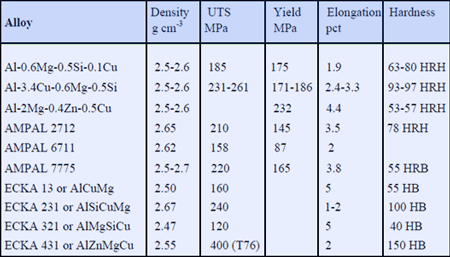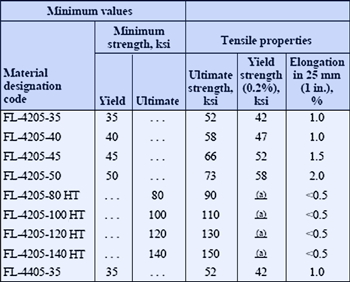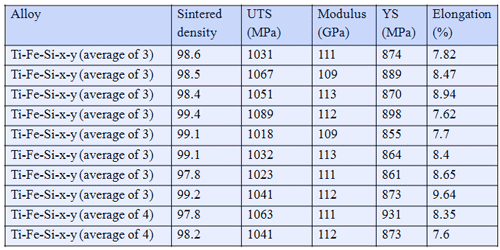Titanium powders for mass production, general engineering applications
Most of the high profile development activity in titanium (Ti) powder metallurgy (PM) has been aimed at niche applications in sectors such as aerospace and healthcare.
To penetrate such markets, developers of Ti PM products have been forced into trying to match the compositional and mechanical property requirements of existing wrought product standards.
In terms of composition, this has meant low levels of interstitial elements are the order of the day and, in terms of mechanical properties, double-digit tensile elongation values, in particular, have been a major target.
This has forced the use of high cost, fully pre-alloyed atomised powder grades and the use of PM processing technologies that can create full or near-to-full density products (e.g. HIP, MIM etc.).
An entirely different perspective on Ti PM material requirements was, however, taken in a paper presented by Ma Qian, The University of Queensland, on behalf of his co-authors, Ya-Feng Yang, Ming Yan, Shudong Luo and Graham Schaffer, which looked at what would be needed to stimulate the adoption of Ti PM in mass market, general engineering applications.
Initial consideration of the potential penetration of such markets indicated that:-
- Processing by conventional die press/sinter PM would be required.
- A low-cost powder feedstock would be needed. The target set for this development was for a material cost of US$25/kg. It was felt that such a feedstock material would have to use the elemental blended approach and should be based on the use of HDH-Ti powder. HDH-Ti powder price depends on the price of titanium sponge and it is currently available from China at around US$25/kg at, in view of the authors’ assessments, good quality levels.
- A realistic target for tensile ductility level would need to be set, in the context of PM materials already serving these types of markets. The case was made that established PM aluminium materials had penetrated the market offering elongation levels of the order of 2% (Table 1) and that the ductility levels of many standard ferrous PM structural materials were lower still (Table 2). The US military specification MIL-DTL-46077G for wrought Ti-6Al-4V structural armour plate (Table 3) was cited in seeking an answer to the question “What ductility values would be adequate for PM Ti parts for non-fatigue-critical applications?”. On this basis, it was decided that an elongation level of 6% should be targeted in conjunction with as high as possible levels of YS and UTS.
The feedstock material cost target did not leave a lot of elbow room for alloying element costs. The assessment of low cost options for alloying elements has eventually led the group to focus on the Ti-Fe-Si system.
Silicon (at 2.33g/cm3 density) is much lighter than titanium (4.54g/cm3), is inexpensive and small additions of silicon to titanium alloys, through ingot route metallurgy, have been shown to improve creep and oxidation resistance. However, to date, limited attention has been paid to its use in PM Ti alloys.
Based on the use of Thermo-Calc predictions (Fig. 1), DSC analyses, and microstructure examination, viable sintering treatments have been defined for Ti-Fe-Si alloys.
The as-sintered properties achieved on sintering Ti-xFe-0.5Si and Ti-xFe-1Si alloys at 1300°C for 2 hours in vacuum are illustrated in Fig. 2. The ductility values, shown in this figure, are somewhat lower than the defined target. Subsequent work has therefore been directed at the use of minor additions of other elements to improve properties. Table 4 indicates that properties in such a Ti-Fe-Si-x-y system can reach around 98% density, UTS>1000N/mm2, YS>900N/mm2 and elongation >8%.
At present, until the group has secured protection of its intellectual property in this development, the identities of elements x and y have not been revealed. We can look forward to the point when the protection is in place and all can be revealed.
Further reading:
Production of fine titanium powders via the Hydride-Dehydride (HDH) process
Titanium and titanium alloy Powder Injection Moulding: Matching application requirements
Mixing titanium MIM feedstock: Homogeneity, debinding and handling strength
Titanium parts by powder injection moulding of TiH2-based feedstocks
Advanced metal powder injection moulding for multilayered micro porous titanium components
News | Articles | Market reviews | Search directory | Subscribe to e-newsletter











